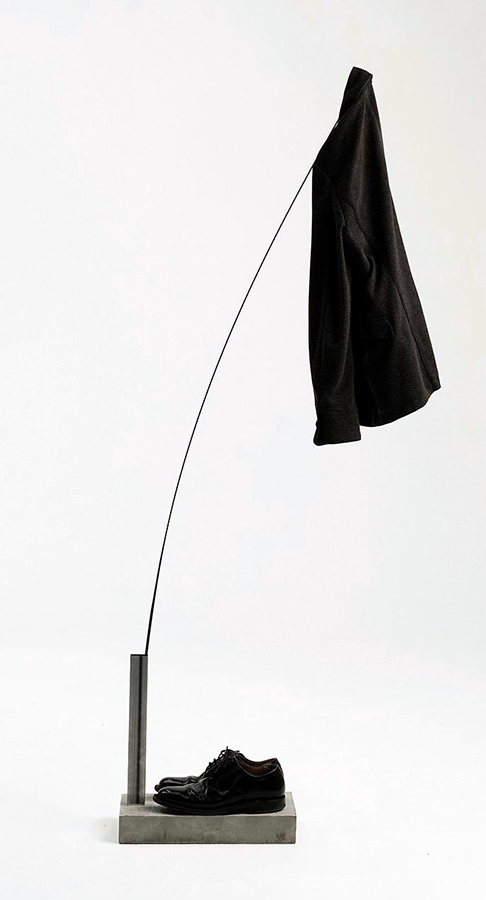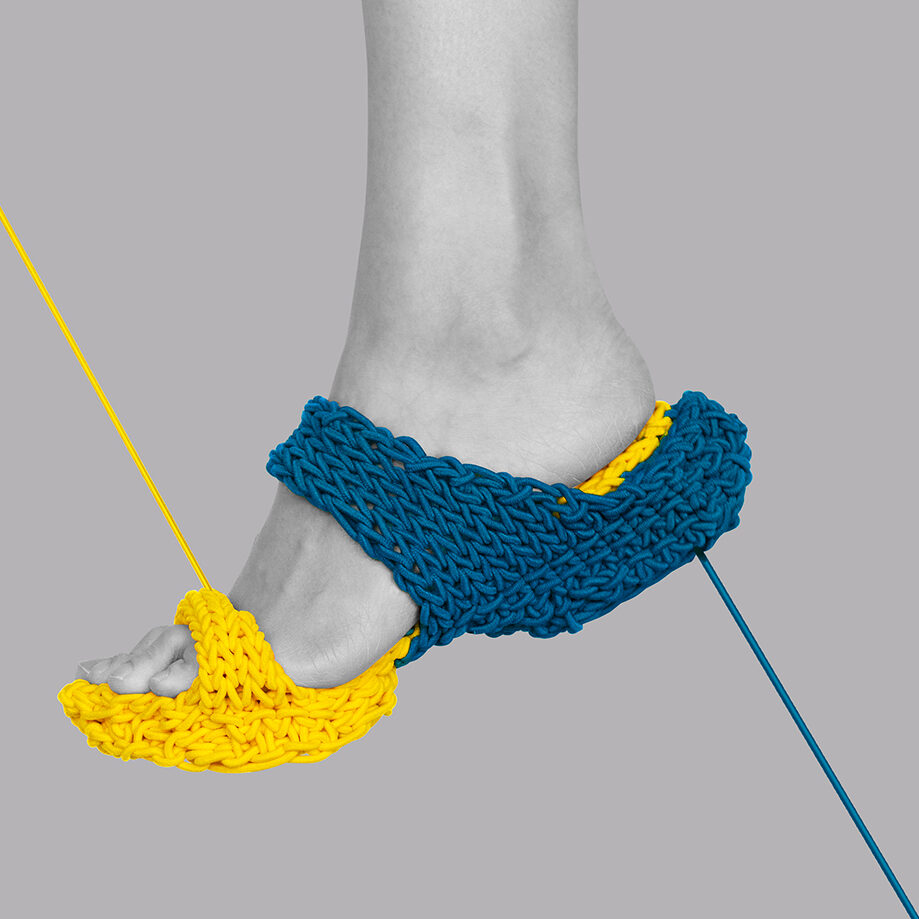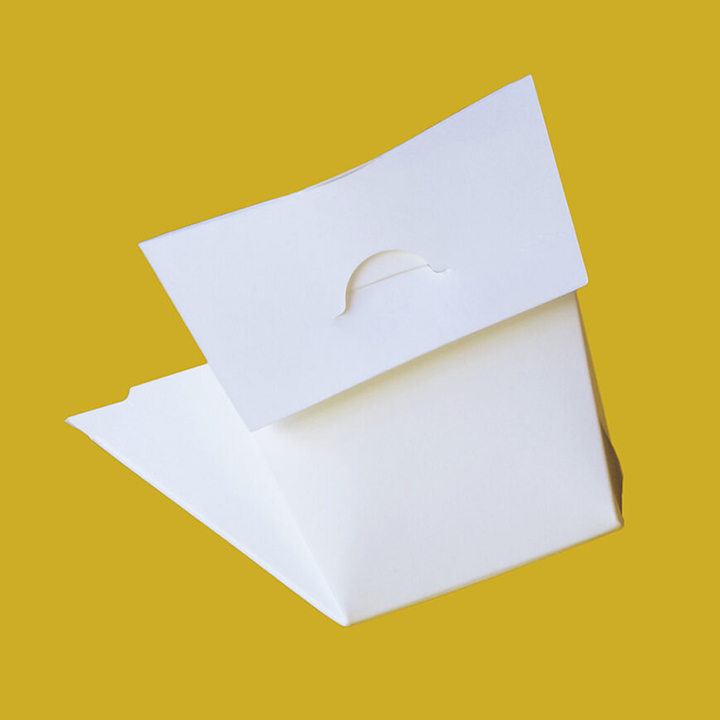Nakajimaya Crossing
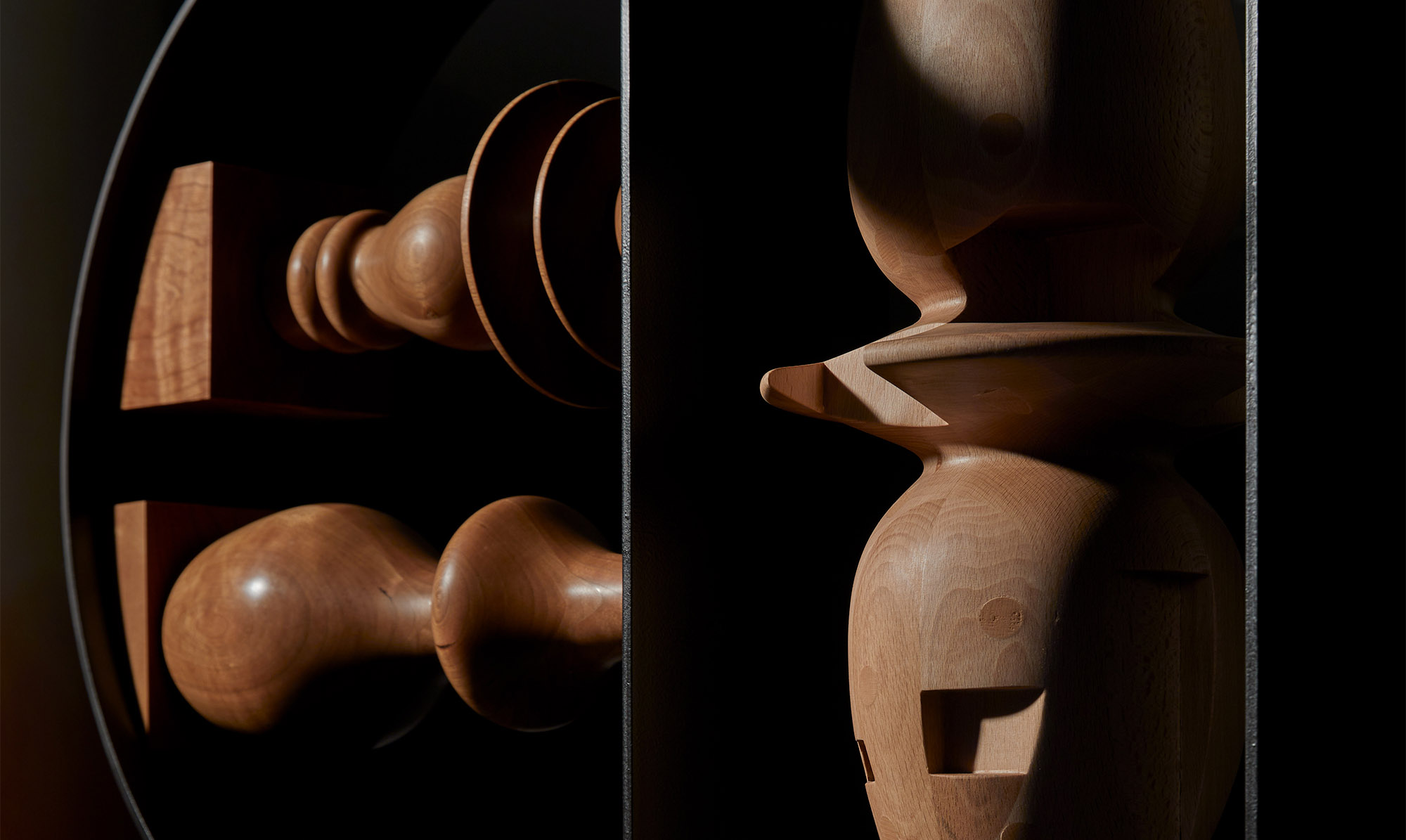
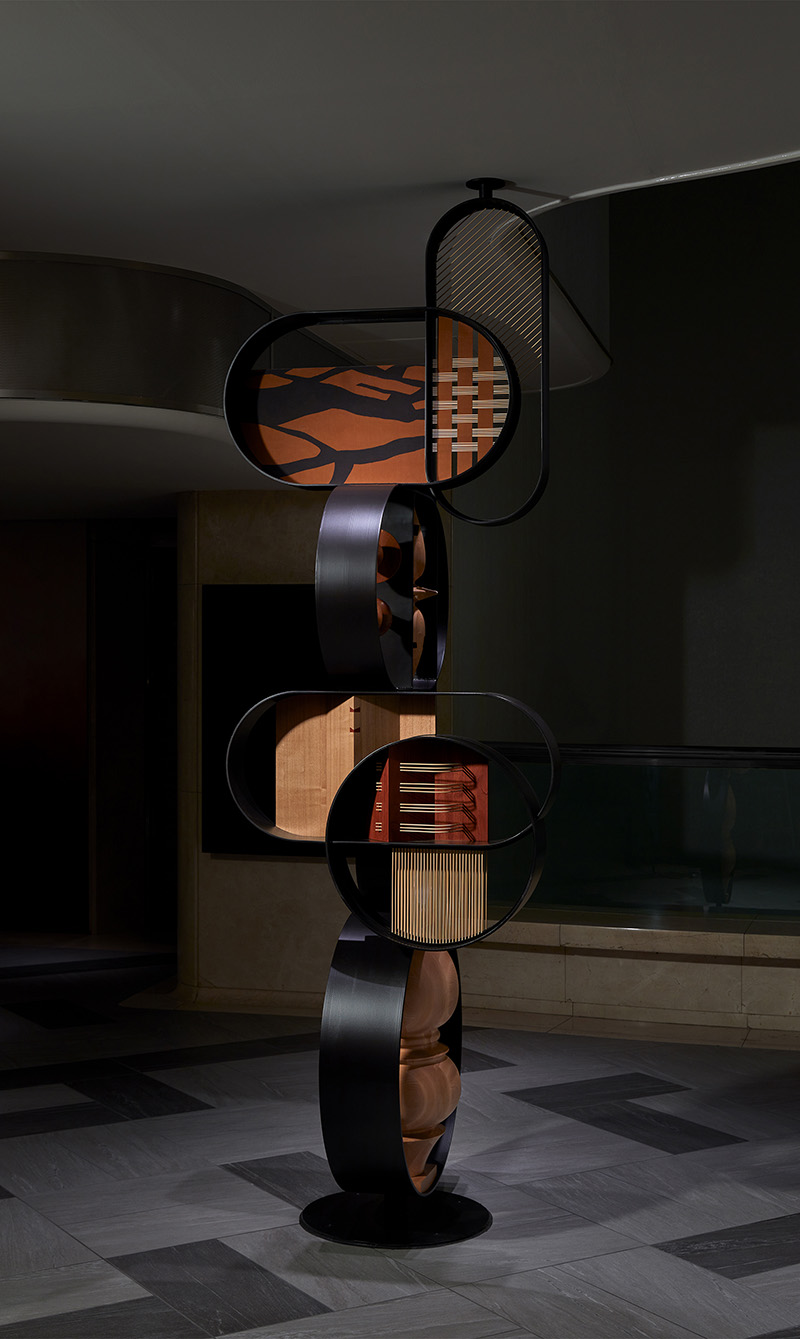
静岡市で創業100年を超える老舗ホテル「中島屋グランドホテル」のロビーに設置されたモニュメント。 静岡で活動する4人の伝統工芸の職人の技術を用いた造形物を長円形の金属フレームに納め、それらを積み上げた。4種類の工芸品は、各フレームに一つずつ配置されているが、異なるフレームが交差した箇所には、二種の工芸技術が融合した造形物が納められている。例えば、日本茶の茶葉で染色された生地が収まったフレームと、竹細工が収められたフレームが交差する部分は、染色生地と竹細工を編み合わせることで立体的なテキスタイル表現を構築している。
Nakajimaya Crossing is a monument created by the Japanese design studio UO, installed in the lobby of a venerable century-old hotel in Shizuoka City. This city, once a flourishing castle town around 400 years ago, became a hub for numerous craftsmen and the development of various artisanal techniques. The monument draws from these traditional crafts that have been handed down through generations. UO designed the monument by incorporating artisanal objects into elongated metal frames, layering and stacking them to create the structure.
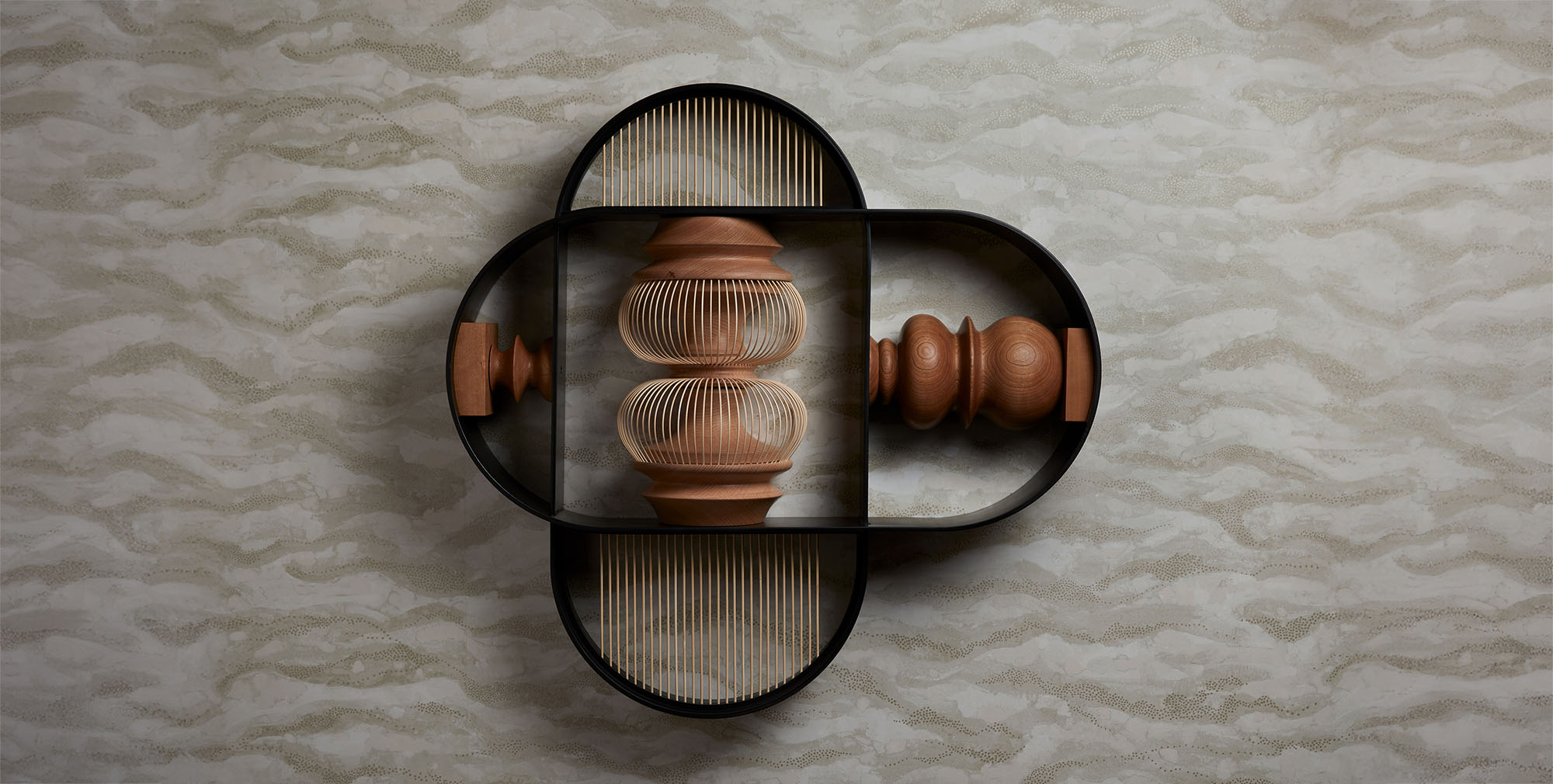
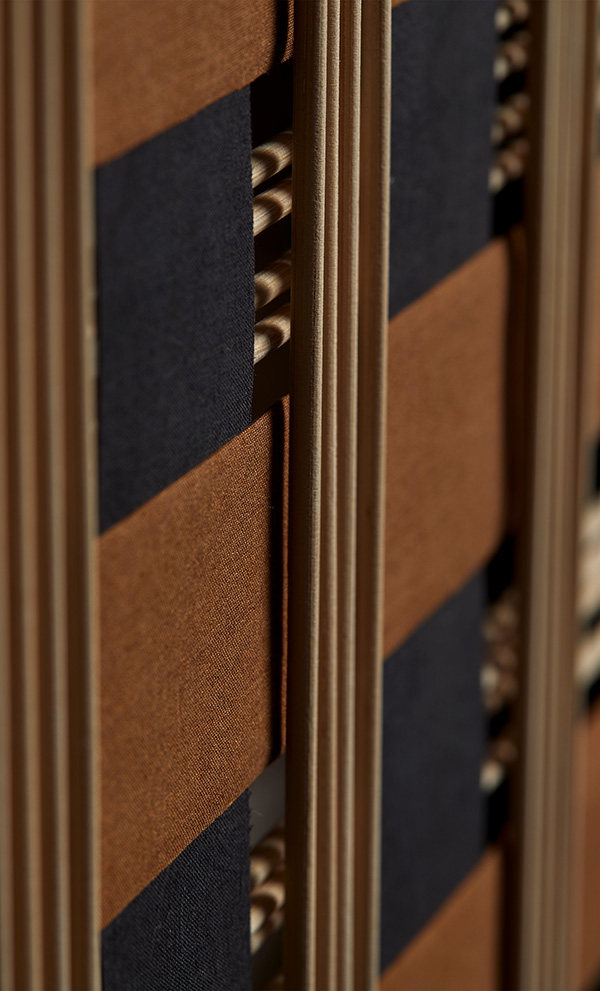
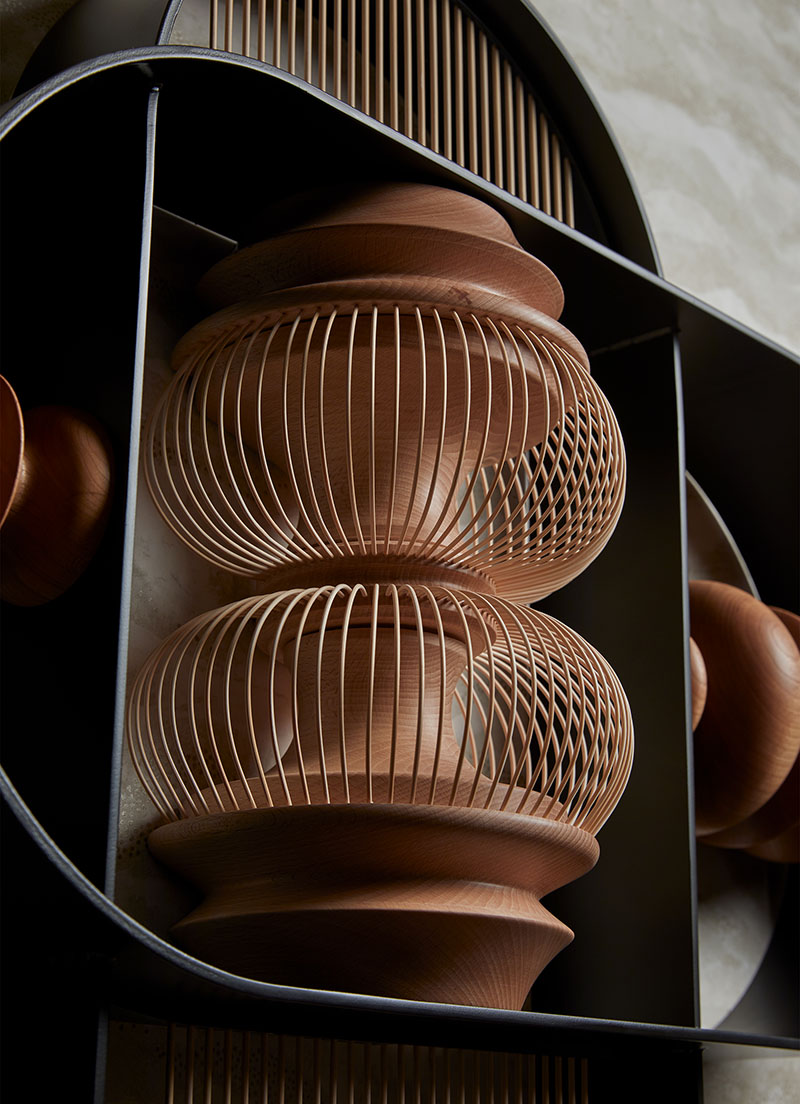
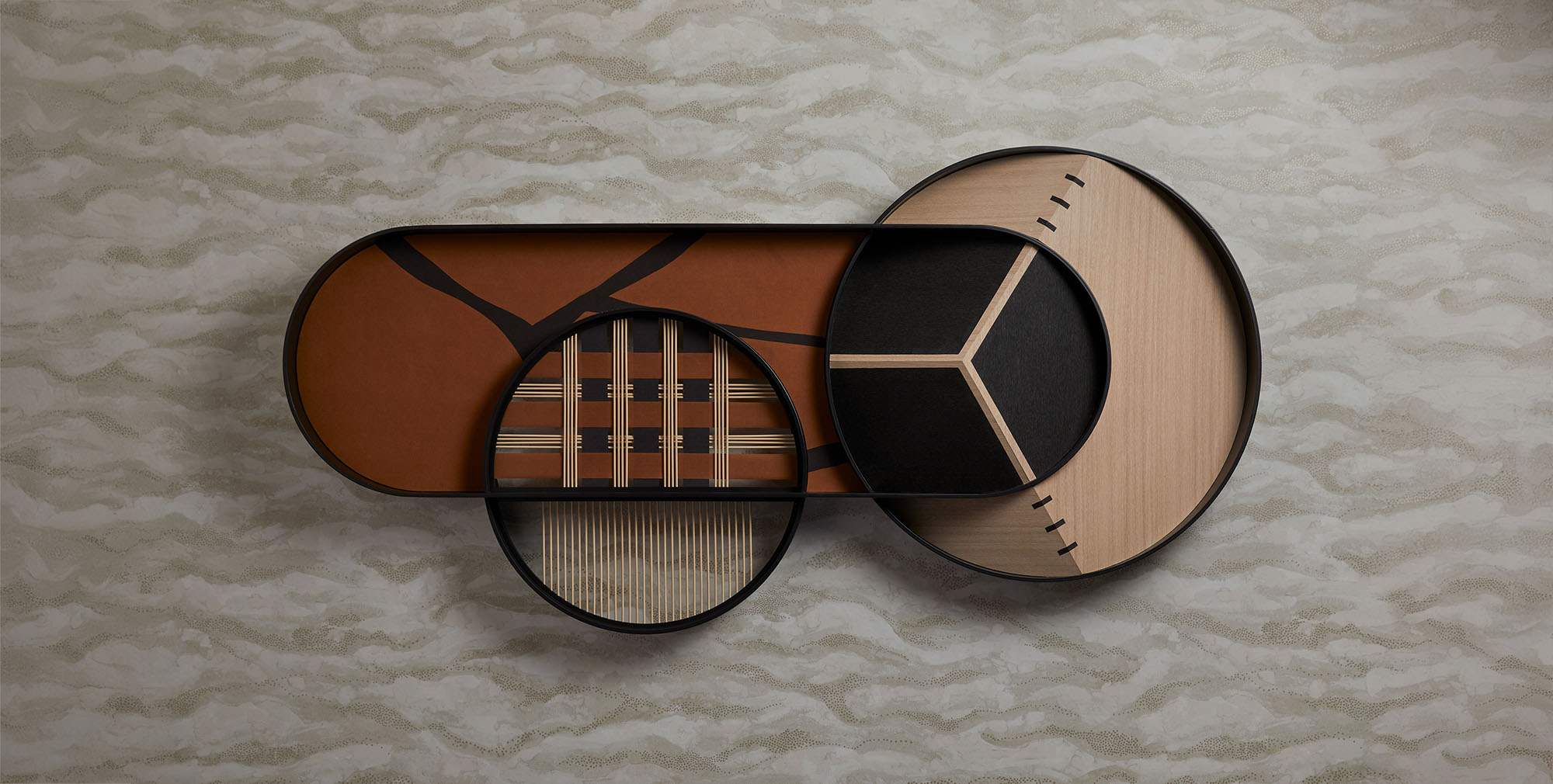
従来は交わることのない、それぞれが独自の文脈を持つ工芸技術に第三者として関わる手法として、「技術表現の交わり」というルールを設けた。このルールは技を守る・磨くという工芸技術の内向性に対し、伝統の既存の枠を押し広げ、外部に開かれた技術表現を生んでいる。
また、異なる技術の交わりというルールは、多様な目的や専門性を持つ人々が往来し関係し合う「ホテル」という空間の性質と重なる。
このルールは、現状はモニュメントのデザインにのみ用いられているが、今後はホテル内の家具やルームキー等のプロダクトにも展開を計画し、立体的なビジュアルアイデンティティとしてホテルの滞在体験の設計へと組み込まれていく。
At the intersection, frames that blend two different techniques create unique expressions. For example, at the intersection of a frame featuring fabric dyed with tea leaves, known as “ocha-zome,” and another frame with meticulously arranged 2mm bamboo strips used in “take-sensuji” craftsmanship, a three-dimensional textile is made from the intricate weaving of dyed fabric and bamboo. These intersections of different techniques symbolize the hotel’s role as a space where diverse people with varied purposes and expertise converge and interact. By deliberately combining crafts with distinct and strong individual contexts, UO has pushed traditional boundaries, creating innovative technical expressions. Although currently focused on interior decorations centered around the lobby, this principle of “combining techniques” is expected to extend to products like furniture and room keys, becoming a three-dimensional visual identity that enhances the overall guest experience.
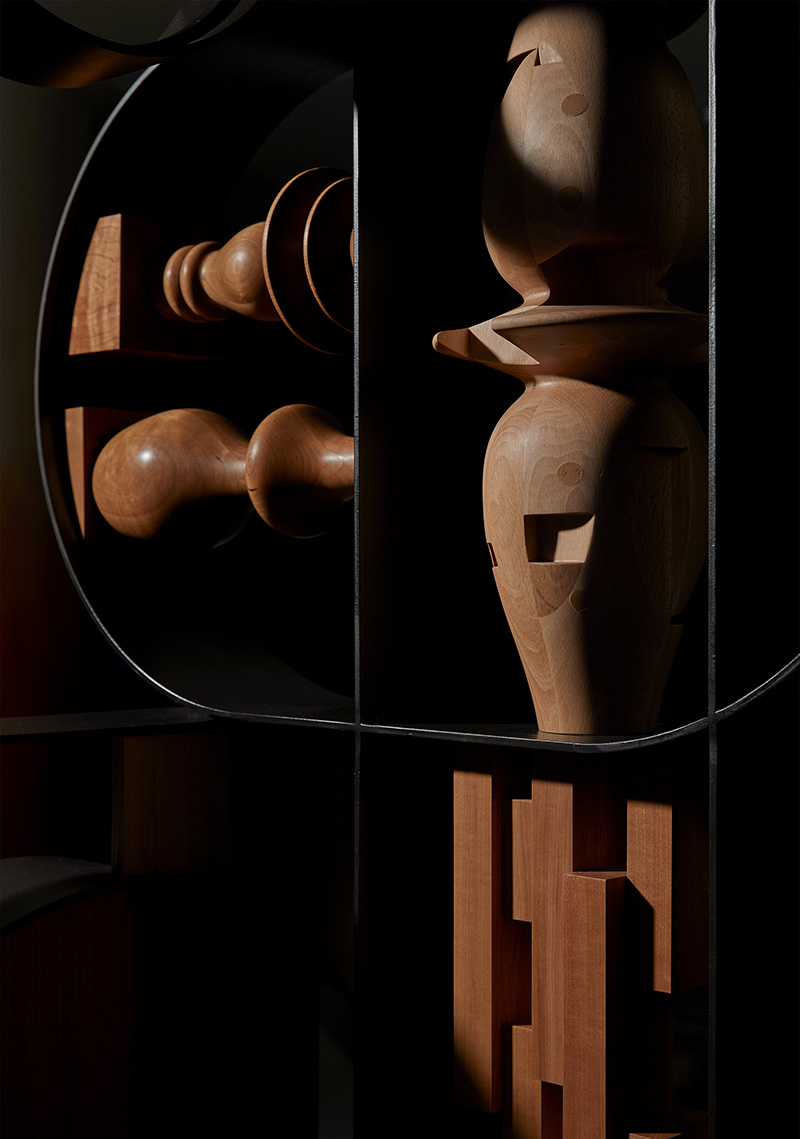
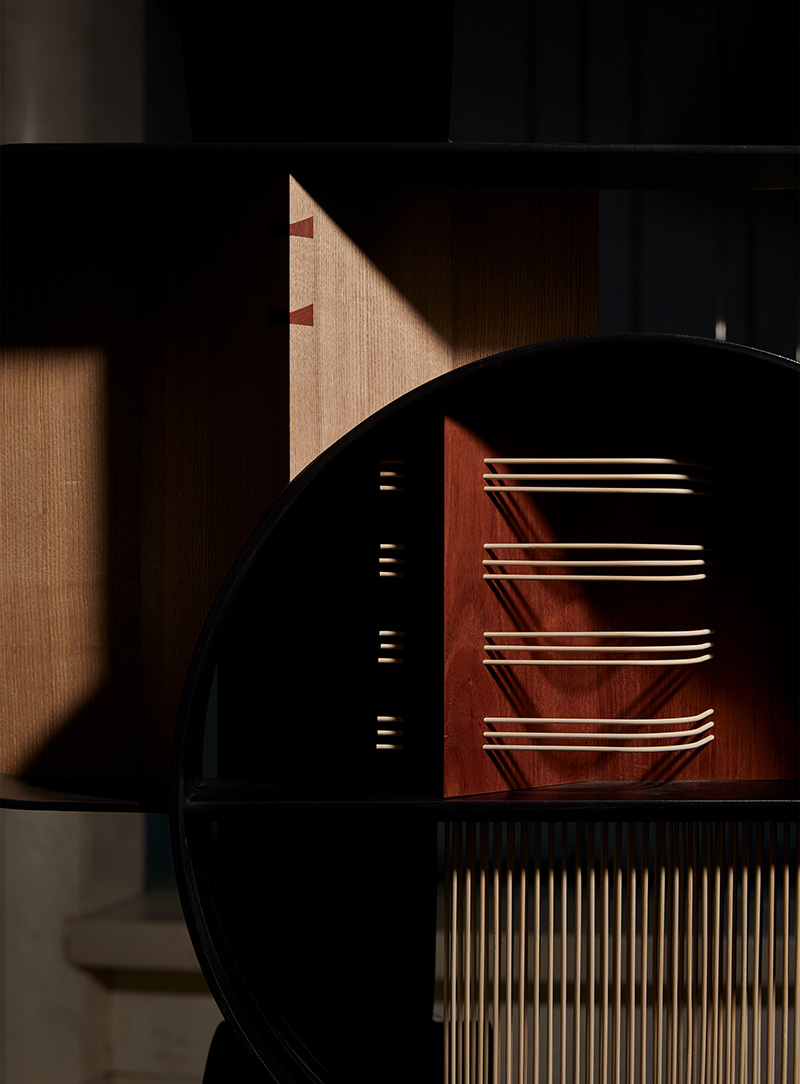
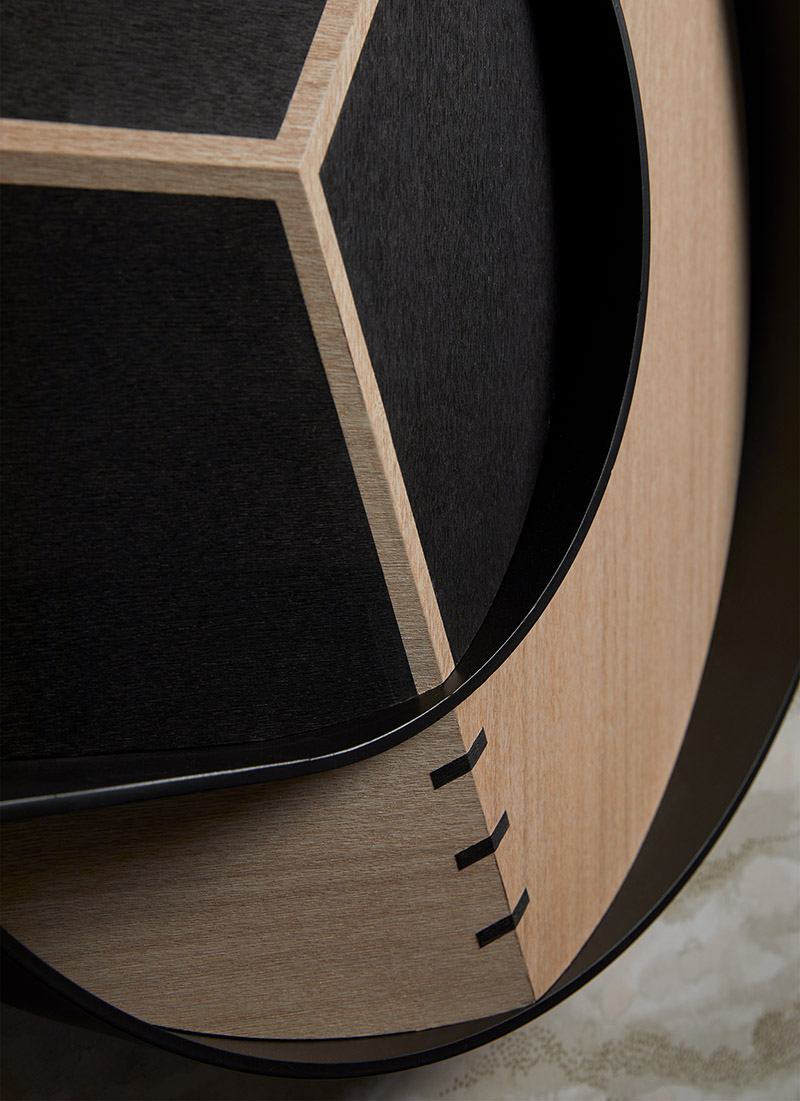
ホテルの所在地である静岡市は、約400年前、城下町として栄え、多くの職人が集い、様々な工芸技術が発達した。このモニュメントの制作に携わる4者の職人はこれらの伝統的な技術を現代に引き継ぐ担い手であるが、従来は単独で作品制作を完結し、互いの技術を組み合わせることはない。私たちの役割は、各職人の核心的な技術要素を抽出し、それらを組み替えながら再構築するこで、新たな表現技法を偶発的に生み出し、それぞれの職人に還元することである。
The four craftsmen involved in this project typically work independently, completing their creations alone and not combining their techniques with others. However, with the design studio acting as a hub, their skills were creatively merged, transcending traditional frameworks and yielding multiple innovative expressions. The value lies not only in creating the monument but also in the process that allowed the craftsmen to gain useful and groundbreaking techniques.
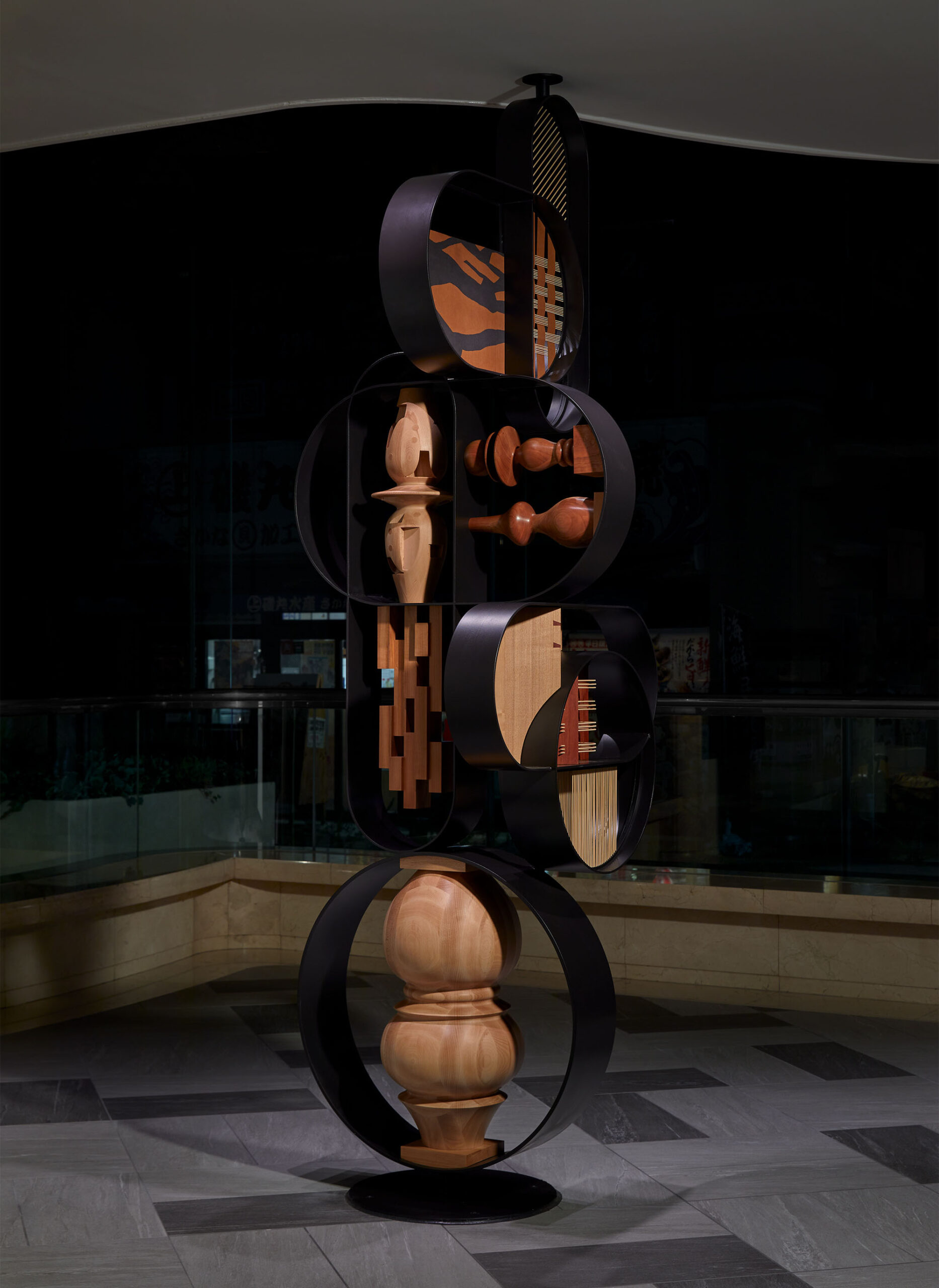
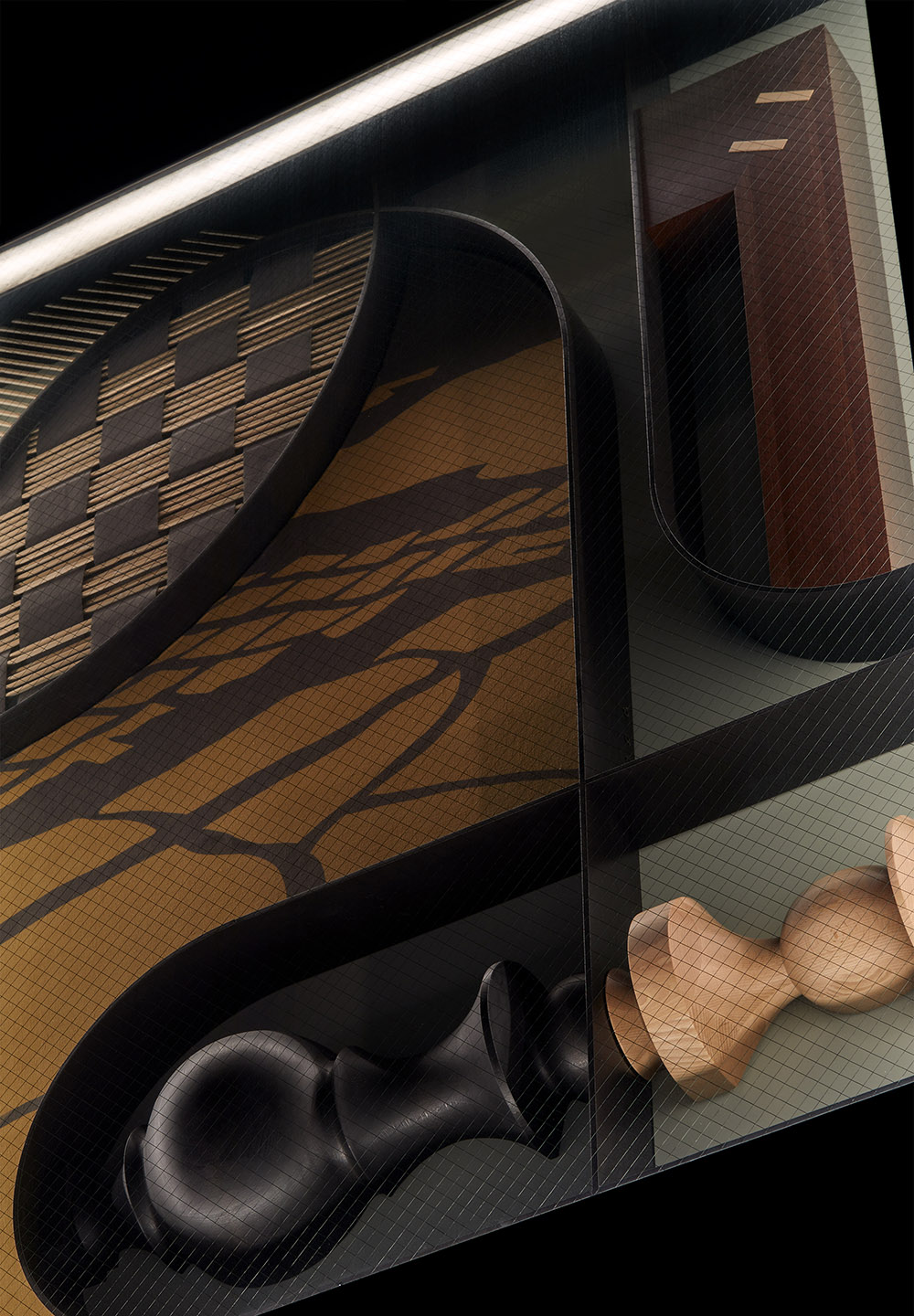
モニュメントはホテルのロビー周辺に複数が配置され、ロビーの中央に配置されたタワー、フロントの背面に設置された4点の壁面オブジェ、建物の正面入り口上部のファサードを覆う装飾で構成される。モニュメントは街の人々に長く愛されてきたホテルの新しいシンボルとして、恒久的に設置される。
It consists of a central tower placed in the hotel lobby, four wall-mounted objects behind the front desk, and decorative elements covering the façade above the main entrance. All these components adhere to a unified design principle. Each of the four types of crafts is showcased in individual frames.This monument is set to be a permanent symbol of the hotel, cherished by the local community for years to come.
デザイン:UO
製作:お茶染め Washizu.、KOZOU HAKO STYLE、挽物所639、有限会社みやび行燈製作所、吉政鉄工
施主:株式会社中島屋ホテルズ
協力:アーツカウンシルしずおか
設置場所:中島屋グランドホテル(静岡市葵区紺屋町3-10) ロビー、フロント、玄関ファサード
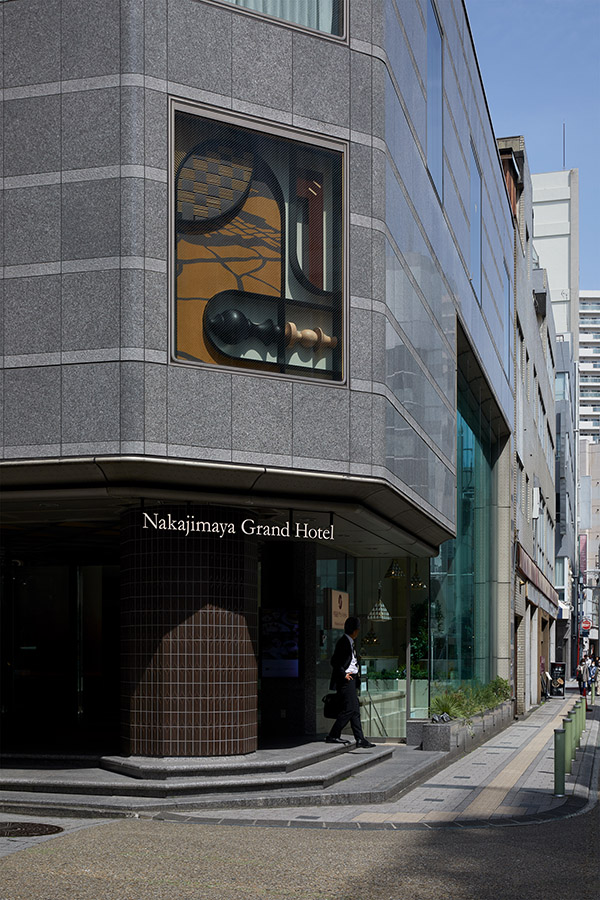
中島屋グランドホテル / 2024
Nakajimaya Grand Hotel
©️2020 - 2025 UO

